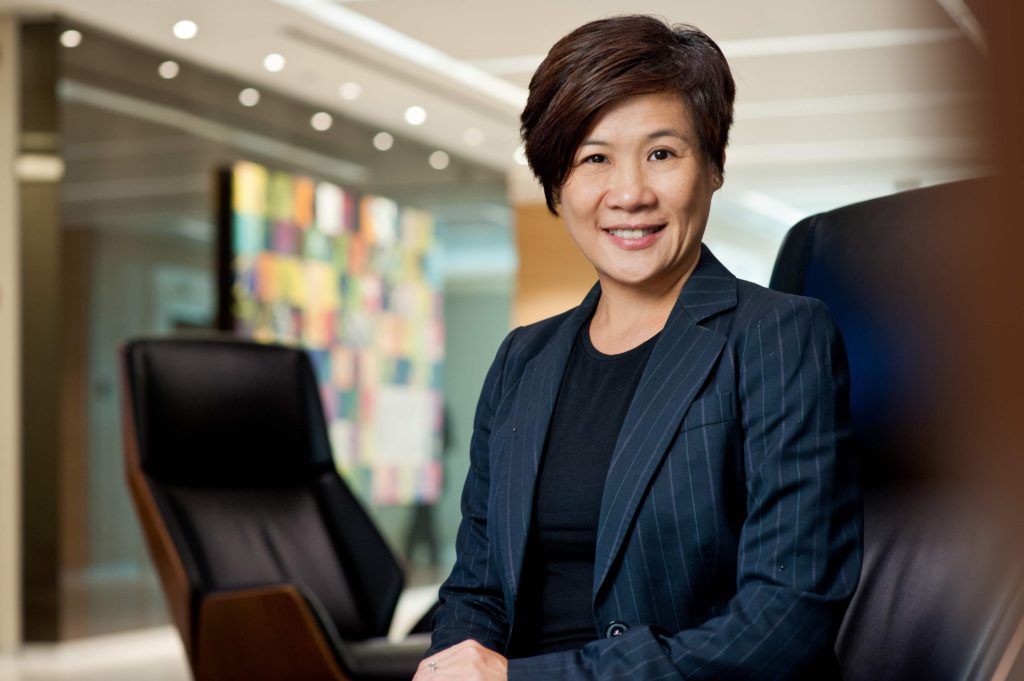This article was written by Seah Gek Choo, Deloitte Southeast Asia talent leader.
As the talent landscape becomes increasingly competitive, an organization’s culture is likely to be an important factor in attracting candidates and keeping current employees satisfied. Many of today’s leaders describe inclusion as a business imperative and a critical component of organizational culture.
Inclusion goes beyond simply hiring employees with diverse ethnicities, races, and socioeconomic backgrounds. It is an intentional effort to create an environment that values and welcomes employees of all backgrounds and walks of life.
Although there is a strong business case for inclusion, and organizations devote time, resources, and finances to cultivate it, few are confident enough to say that they are truly inclusive. For many, the challenge is knowing where to begin and what to focus on.
Starting from the top is key. Leaders play a vital role in setting the tone from the top, and leaders who practice inclusive actions change their interactions with team members. This creates a snowball effect that improves the work environment and creates a more inclusive experience for everyone.
What makes an inclusive leader?
Simply throwing a mix of people together does not guarantee inclusion. At the heart of it, the organization’s leadership plays a big role. Leaders across all levels of the organization have the influence to ensure that the workplace is a safe place for their team members to be their authentic self, where everyone is treated fairly and with respect, and where each individual is valued for their unique perspectives and contributions.
As a leader in an organization that has more than 11,000 people across different countries in Southeast Asia, I am cognizant that I have the ability to cast a long shadow. Whatever I say or do can have a huge impact on the culture of the organization, so it is imperative that my fellow leaders and I lead by example and practice inclusive leadership, exhibiting the following traits:
- Commitment: Devoted to diversity and inclusion because these objectives align with our personal values and because we believe in the impact this can have on our business.
- Courage: Speaking up and challenging the status quo, while being humble about our strengths and weaknesses.
- Awareness of bias: Being mindful of personal and organizational blind spots, and self-regulate to help ensure “fair play.”
- Curiosity: Having an open mindset, a desire to understand how others view and experience the world, and a tolerance for ambiguity.
- Cultural intelligence: Being confident and effective in cross-cultural interactions.
- Collaborative: Empowering individuals as well as creating and leveraging diverse groups to voice their opinions.

For me, collaboration is an important aspect of my leadership, given that I work closely with colleagues from different countries across Southeast Asia and beyond. In any discussion, I do my best to ensure that everyone’s views are heard and considered. As some colleagues are less vocal than others, and may be less inclined to share their thoughts openly in a group setting, I will also reach out to them privately so they can present their viewpoints and that their perspective is taken into consideration whenever decisions are made.
Certain traits, such as unconscious bias, may be difficult to overcome. Some individuals may instinctively prefer people who are “familiar” to them, and express this preference through their words and behavior. Regardless of the bias, it creates barriers to inclusion, engagement, innovation and ultimately, performance. It is important to be self-aware of our feelings and beliefs. This will allow us to take the appropriate steps to minimize, and ultimately overcome, our biases. Practicing self-awareness has spurred me to make better and more informed decisions, as it challenges me to think about the long-term organizational needs.
Out of the six traits, I believe that humility is under-discussed, even though it is a crucial leadership trait. Being a humble leader means having the ability to acknowledge that I do not know everything, nor do I need to. Humility allows leaders to learn from colleagues and peers, and it also encourages team members to speak up without fear of being judged. Leaders are also human and will inevitably make mistakes. When mistakes are made, it is important to admit to them and take responsibility. Of course, when there is success, leaders need to appreciate and recognize the people who helped them achieve it.
Leaders being committed to DEI (diversity, equity, and inclusion)
Being committed to DEI is a huge challenge for any leader. It requires energy, time, and resources—three of a leader’s most precious assets. There is no doubt that diversity is good for business, and the need for a truly diverse workforce across all organizational levels grows more compelling as they begin to discover that there are benefits to promoting and supporting a diverse and inclusive workplace that go beyond optics.
Workplace diversity should be a priority for all organizations because it accomplishes three goals:
- Promotes innovation: Creating collaborative teams with diverse backgrounds and experiences results in more creative ideas and solutions.
- Attracts candidates that will stay: An organization that values diversity and inclusion attracts people. When people feel cared for, and see that their peers are being cared for, they stick around and may even refer others to work for the organization.
- Improves performance: Those who feel comfortable, happy, and confident at work are more likely to perform better.
As part of Deloitte’s efforts to make the workplace more equitable, we empower our people to take ownership of their careers through employee development and mentorship opportunities. Through our career development program, our people have coaches to help them identify and develop their strengths, set career goals, and ways to achieve them. They are also encouraged to identify and connect with mentors in Deloitte and also from within the industry to get more exposure, as well as to leverage their mentors’ experience so they can achieve their professional and personal ambitions.
An organization’s commitment to inclusion must be visible at all levels. While a combination of top-down and ground-up approaches is important to nurture culture from within, it is the policies and public accountability that will help drive an organization to achieve its DEI goals. This is where leaders play a critical role. When leaders prioritize energy, time, and resources to champion inclusion, it is a tone-at-the-top, and a clear signal that inclusion is a true priority for the organization. For an organization to have a successful DEI strategy, it must be holistic—the people, processes, programs, and policies should be embedded in the full talent experience.
A leader should always be focused on skill and emotional development. Often, the best results come from organizations that invest in training its leaders, so that they have the knowledge needed, and are committed to champion DEI efforts within the organization. At Deloitte, the Inclusive Leadership Activation Lab is a required component of our leadership development program. The lab includes a sharing session on real-life issues and experiences, and our leaders learn how to identify challenges and opportunities for change within the organization.
Leaders ought to be held accountable for achieving two kinds of DEI results within their respective areas of the business—diversity results focused on representation (employment, promotion, and mobility outcomes) and inclusion results focused on the day-to-day employee experience (such as engagement, equity, and psychological safety outcomes). In order to achieve their objectives and key results, leaders should have access to organizational development and talent development resources. It is essential that this be considered a part of the day job and not an “out-of-hours” activity. Executive leaders must provide both the time and resources to do this effectively.
Furthermore, leaders need to mitigate implicit bias at a systemic level. Therefore, instead of concentrating on eliminating individual biases, efforts should be directed toward mitigating systemic biases that exist in talent management and other decision-making processes. For instance, organizations may only advertise jobs to a narrow range of potential candidates, or only reach out to certain schools and universities. Identifying and correcting these biases requires a thorough examination of talent management policies and processes to understand those that limit opportunities. By doing so, leaders, managers, human resources, and DEI professionals can identify what they should stop, change, and redesign.
Lastly, the focus should be less on one-off diversity training programs as they focus narrowly on reducing implicit bias and often fail to lead to sustained behavior change. Instead, diversity training should be considered as a part of an organizational-wide training initiative, which includes both awareness and skills development over time.
Equal opportunities for all
While there are many inequalities that workplaces need to address, gender inequality is one of the highest on the agenda.
According to the World Economic Forum Global Gender Gap Report 2021, women globally earned around 37% less than men in similar roles. Based on the current trajectory, women are 286.7 years from achieving gender parity in the areas of economic participation and opportunity, including equal pay.
The workplace can move the needle in this regard by ensuring that there is equal pay, fair rewards and promotions, and the same opportunities to take on leadership roles and positions of responsibility.
Additionally, we need to grow the representation of women in leadership roles to move the needle on gender balance. A diverse senior management representation sets the tone at the top; while change may not happen overnight, we can empower women and create an environment that supports their career development, thus paving the way for future generations to follow.
Personally, I am driven by the pursuit of fairness. To me, it is about people being given equal opportunities to achieve what they should. While gender inequality is the biggest issue in current workplaces, we must also be aware of the other inequalities related to race, background, age, or experience. It is my firm belief that merit-based promotions ought to be the default, not promotions based on seniority. Deloitte supports this with accelerated promotions that are based on capabilities rather than tenure.
As a talent leader, I try to walk the talk. To help my team members advance in their careers, I proactively advocate for their promotions, and secure them opportunities through high-visibility assignments. Although I have worked with some of them for less than a year, I have placed them under my sponsorship because they have demonstrated competence and the ability to handle greater responsibilities. Coaching and mentoring sessions as well as on-the-job experience are the most effective ways to learn and grow professionally. To further augment our learning culture, our people have access to a variety of facilitator-led training, workshops, and digital learning opportunities. Additionally, Cura, our AI learning platform, provides curated data, knowledge, and skills tailored to specific job roles, careers, and purpose.
Organizations can better support women at work by committing to these actions:
- Develop a flexible work scheme: Organizations should develop policies that recognize that people have families and lives outside of work. Flexibility makes it easier for people with caregiving and parental responsibilities, or those who have other commitments in areas like sports, volunteering, and academics, to manage their work and personal interests.
- Scaled workload scheme: Policies that allow workload to be scaled upwards or downwards may encourage women to stay in or return to the workforce. This sends the message that women should not have to make a choice to give up their careers for their caregiving duties—men can take on these duties as well.
- Encourage sponsors: Having strong sponsors helps pave the way to success in the workplace. I am a firm believer that everyone, not only women, should look for sponsors who can advocate for them and give them the support they need to succeed in their careers.
Beyond 2022
For us to advance as an inclusive society, organizations, and the leaders within them, need to do their part and be more transparent and honest about their DEI efforts in order to maintain strong relationships with stakeholders and the community as a whole. Organizations that invest in DEI can not only build stronger, more effective teams, but they can also show their stakeholders how valued they are.
The reality is that it is an uphill struggle to bring about real and lasting change; it requires a considerable amount of time, support, and resources. Even if progress is slow and results might not be obvious right away, organizations must be resilient and stay the course for a more inclusive future.




